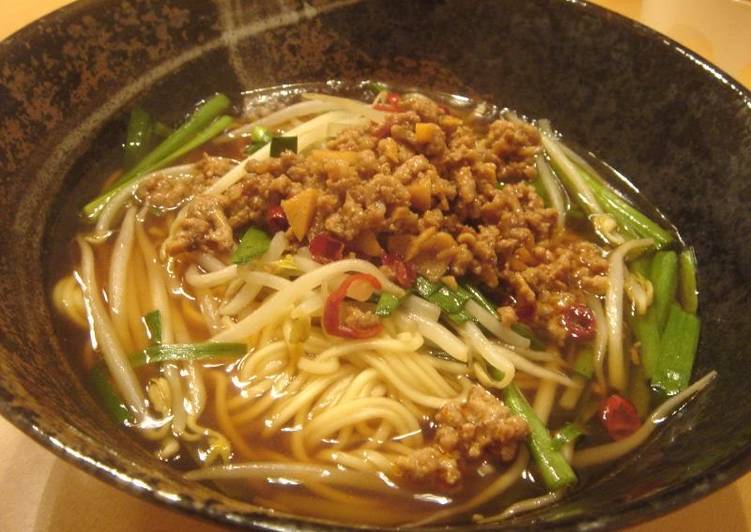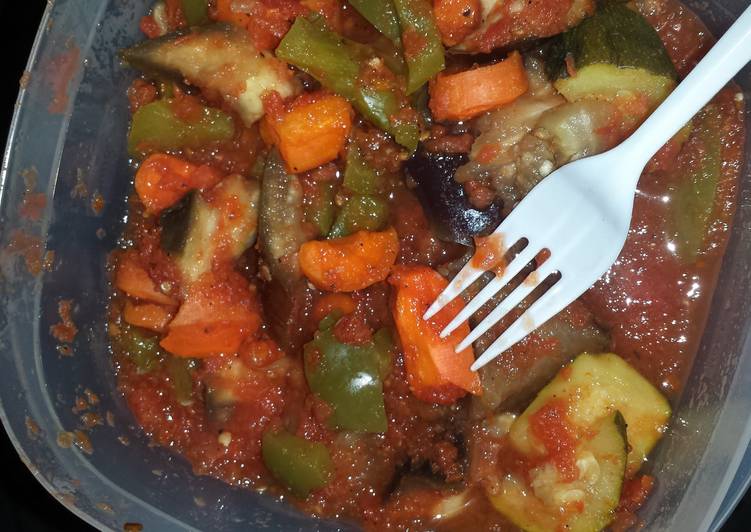
Hello everybody, it is Jim, welcome to my recipe page. Today, I will show you a way to prepare a distinctive dish, a nagoya speciality misen-style taiwanese ramen. It is one of my favorites food recipes. For mine, I’m gonna make it a little bit tasty. This is gonna smell and look delicious.
My husband and I used to go to Taiwanese ramen restaurants before our son was born, but it's hard to take our baby out to restaurants. Finally I tried to make my own. I've almost achieved the taste I was looking for after the second try.
A Nagoya Speciality Misen-Style Taiwanese Ramen is one of the most well liked of current trending foods in the world. It’s enjoyed by millions every day. It’s easy, it is fast, it tastes delicious. A Nagoya Speciality Misen-Style Taiwanese Ramen is something which I have loved my whole life. They are fine and they look fantastic.
To get started with this particular recipe, we have to first prepare a few ingredients. You can have a nagoya speciality misen-style taiwanese ramen using 7 ingredients and 7 steps. Here is how you can achieve it.
The ingredients needed to make A Nagoya Speciality Misen-Style Taiwanese Ramen:
- Make ready 100 grams Ground pork
- Prepare 2 clove Garlice (homemade pickled garlic with soy sauce)
- Make ready 5 Red chili peppers
- Get 2 tsp Doubanjiang
- Take 1/2 bag Bean sprouts
- Take 1/2 bag Chinese chives
- Prepare 2 portions Store-bought soy sauce flavoured ramen noodles
Nagoya-Style Super-Spicy Taiwan Ramen After leaving Nagoya, I wanted to be able to experience the taste of Misen Ramen, so I looked into how to make it. Adjust the spiciness to your liking. For the ramen, I recommend uncooked fresh ramen with soup packets, but instant ramen is also fine. Soy sauce flavor is the standard, but miso and salt are.
Steps to make A Nagoya Speciality Misen-Style Taiwanese Ramen:
- Roughly mince the garlic. Remove seeds from the red hot peppers. (You don't have to remove them completely.) Chop them into small rounds. Wash the bean sprouts. Wash the Chinese chives, and chop into 5 cm lengths.
- Pour a little bit of vegetable oil in a wok, and stir-fry the garlic, half of red chili peppers, and Doubanjiang.
- When fragrant, add the ground meat. When the colour of the meat changes, add the 1 tablespoon of soy sauce from the pickled garlic. Turn off the heat, and transfer to a plate.
- Please don't wash the wok from Step 2. Add the instructed amount of water on the package. I used 500 ml of water for 2 servings this time, and remaining red hot peppers, then turn on the heat.
- When the water from Step 4 starts to boil, add the sauce for the soup, and bring to a boil again, then turn off the heat. (Usually you have to turn off the heat before adding the sauce.)
- Boil water in a separate pot for cooking the noodles. When you add the noodles in boiling water, simultaneously add the bean sprouts to the Step 5 pot, and turn on the heat. Add the Chinese chives to the soup 30 seconds before the noodles are ready.
- Drain the noodles, pour the Step 6 soup over, and add the Step 3 meat on top, then done.
People who know little about Taiwan Ramen may guess that it is a noodle dish from Taiwan as its county name is included in the ramen name, but Taiwan Ramen is food that originated in Nagoya, Japan. The signature dish here is the "Nagoya Cochin Special Shoyu (Soy Sauce) Ramen", which has a simple soy sauce-based soup and curly noodles. It is topped with Nagoya Cochin - a local breed of chicken in Nagoya - and its richness makes the bowl taste even better.. Ramen Rikimaru is a ramen place that is popular for their mildly spicy Taiwanese. Nagoya's cuisine is pretty different from traditional Japanese fare.
So that’s going to wrap this up with this special food a nagoya speciality misen-style taiwanese ramen recipe. Thanks so much for reading. I am sure that you can make this at home. There is gonna be more interesting food in home recipes coming up. Remember to save this page on your browser, and share it to your family, colleague and friends. Thanks again for reading. Go on get cooking!

